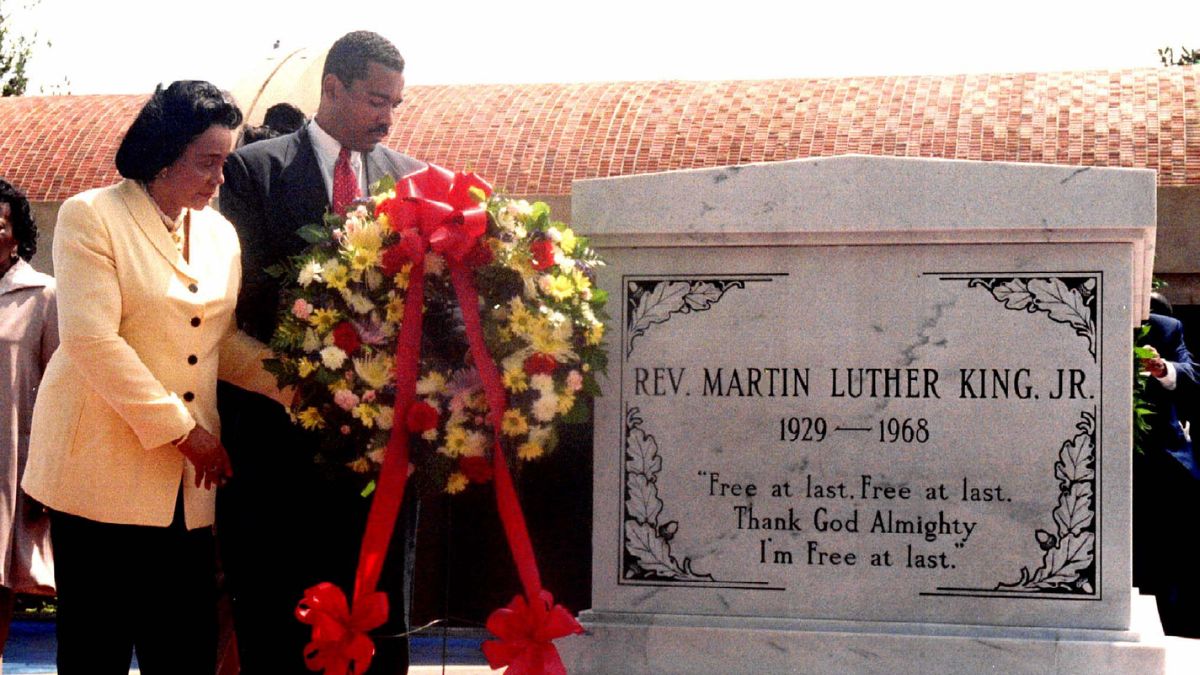In this edition of “ History Today,” we delve into three crucial events that occurred on April 4: the assassination of Dr. Martin Luther King Jr, the founding of Microsoft, and the first implantation of a total artificial heart.
These milestones have left indelible marks on history, shaping our lives and society.
Assassination of Dr Martin Luther King Jr (1968)
On April 4, 1968, the world was shaken by the assassination of Dr. Martin Luther King Jr, one of the most prominent and influential leaders of the American Civil Rights Movement.
King had become the symbol of the movement, advocating for nonviolent resistance to segregation and racial injustice.
His assassination not only marked a devastating blow to the struggle for civil rights but also sent shockwaves throughout the United States and the world.
The events leading up to the assassination unfolded on the evening of April 4.
King had travelled to Memphis, Tennessee, to support the striking sanitation workers, who were protesting for better working conditions, fair wages and recognition of their union.
King had been scheduled to speak at a rally that evening, but before that, he and his close associates, including Reverend Ralph Abernathy, had returned to their rooms at the Lorraine Motel.
The Lorraine Motel had become a focal point for King and his supporters during the civil rights movement. King had arrived in Memphis on April 3, where he delivered a powerful speech at the Mason Temple, in which he famously declared, “I’ve been to the mountaintop.”
In this speech, King seemed to foreshadow his own death, saying, “I may not get there with you, but I want you to know tonight, that we, as a people, will get to the Promised Land.”
At around 5:55 pm on April 4, King and Abernathy stepped out onto the balcony of their second-floor room at the Lorraine Motel. King stood talking to his friends and staff, including Jesse Jackson, who had been part of the civil rights movement from its early days, and his driver, Solomon Jones.
As King leaned over the railing, he was struck by a single bullet fired from a nearby boarding house across the street.
The shot came from a .30-06 rifle, and it struck King in the right cheek, severing his jugular vein, major arteries, and causing a catastrophic injury to his spinal cord. The bullet exited through his neck, leaving King to fall backward onto the balcony.
As he collapsed, a mixture of blood and saliva pooled around his body. The people on the balcony, including Abernathy, quickly rushed to King, but the severity of the wound was apparent.
King was immediately rushed to St. Joseph’s Hospital by ambulance, but despite the efforts of doctors to revive him, he was declared dead at 7:05 pm, less than an hour after the shooting. He was 39 years old.
The news of King’s assassination spread rapidly, and the reaction was one of horror and disbelief. The United States had lost a leader whose message of peace, unity and nonviolent resistance had galvanised millions in the fight for civil rights and justice.
Many people across the country, particularly in black communities, were devastated by the loss. In the days that followed, riots erupted in over 100 cities, with protesters expressing their outrage and grief at the killing of the man who had championed equality.
In the wake of the assassination, the government and law enforcement agencies moved swiftly to identify and apprehend the person responsible for King’s death.
Within two months, James Earl Ray, a fugitive from prison, was arrested and charged with the murder. Ray had been tracked to London after the assassination, where he was captured at Heathrow Airport as he attempted to flee to Rhodesia (now Zimbabwe).
Ray initially pled guilty to the murder in March 1969 and was sentenced to 99 years in prison. However, in subsequent years, he recanted his confession, claiming that he had been part of a larger conspiracy to kill King, and he sought a new trial.
Despite numerous investigations and legal proceedings over the years, including official government inquiries, the case remains a subject of controversy and conspiracy theories.
Some have argued that Ray acted alone, while others contend that there was a larger plot to silence King’s growing influence.
These theories were further fuelled by the release of documents from the FBI’s COINTELPRO program, which sought to discredit and undermine King and other civil rights leaders through surveillance and covert actions.
Decades later, declassified documents shed light on these efforts, revealing the extent of the bureau’s actions against civil rights leaders.
In the years following the assassination, King’s legacy continued to shape the civil rights movement and the broader struggle for racial equality.
The movement’s momentum led to significant legislative changes, including the Civil Rights Act of 1964, which outlawed discrimination based on race, colour, religion, sex, or national origin, and the Voting Rights Act of 1965, which aimed to eliminate barriers to voting for African Americans.
In the decades following his assassination, King’s influence continued to grow. His birthday, January 15, was declared a federal holiday in 1983, and his birthday has been celebrated as Martin Luther King Jr Day since 1986.
King’s legacy is honoured in the National Civil Rights Museum in Memphis, located at the Lorraine Motel.
In January 2025, US President Donald Trump ordered the release of remaining files related to the assassinations of John F Kennedy, Robert F Kennedy, and Martin Luther King Jr, aiming for transparency but also prompting debates about national security and historical narratives.
Founding of Microsoft (1975)
On April 4, 1975, childhood friends Bill Gates and Paul Allen founded Microsoft, a company that would become a dominant force in the global technology industry.
At a time when most Americans used typewriters, Gates and Allen envisioned a future where computers would play a central role in daily life.
Their venture began in Albuquerque, New Mexico, with the development of software for the early personal computers emerging in the 1970s.
Over the decades, Microsoft expanded its offerings, introducing operating systems like Windows 95 and Windows XP, which transformed personal computing.
The company also ventured into hardware with products like the Xbox gaming console and the Surface tablet.
As of April 2025, Microsoft celebrates its 50th anniversary.
First implantation of a total artificial heart (1969)
On April 4, 1969, Dr. Denton A Cooley, founder of the Texas Heart Institute, performed the world’s first implantation of a total artificial heart. The device, developed by Dr. Domingo Liotta, was implanted in a 47-year-old patient suffering from severe heart failure.
This pioneering procedure marked a significant milestone in medical history, offering hope to patients with end-stage heart disease.
The patient survived for nearly three days with the artificial heart, providing valuable insights that spurred further research and development in cardiac care.
This event laid the groundwork for ongoing advancements in artificial heart technology, influencing the design and functionality of devices used in contemporary medical practice.


)
)
)
)
)
)
)
)
)



